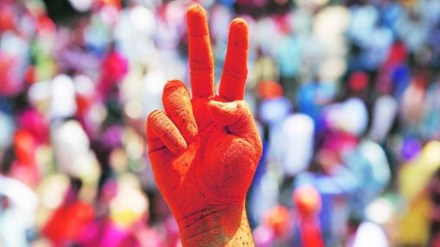Dismissing concerns of low voter turnout in the ongoing Lok Sabha elections impacting the prospects of the incumbent government’s return to power at the Centre, the Bernstein Societe General Group’s latest India Strategy report on the Indian general elections suggests a strong possibility of the Narendra Modi government’s return to power for a third consecutive term.
In terms of the number of seats, the Bernstein report, analysing the voter turnout recorded in the first three phases of elections, does not see much of an impact on the overall election results.
“Unless we witness a steep decline in the voter turnout and significant anti-incumbency contributing, we don’t see much impact on the overall election results, with the incumbent party expected to sail through – with some possibility of repeating 2019 or even going slightly above,” it states.
Delving deeper into its theory, the report states that even an over 5 per cent decline in overall voter turnout could see the BJP repeating its figures for 2019 with minor revisions.
“Based on our assumptions, a 2-3% decline in voters along with anti-incumbency will likely lead to figures just below the 2014 tally. A large decline (>5%) without much anti-incumbency should see them repeating figures of 2019 with minor up/down revisions. Only the case of a large vote share decline (>5%) and significant anti-incumbency is where the elections become a market-defining event. The fact that the opposition is more united nationally this time should start having meaningful
repercussions only at this stage,” it states.
Addressing the concerns over low voter turnout, the report said there was no obvious correlation between voting percentage versus election outcomes based on past elections and that investors should not read too much into the turnout numbers.
“Assuming a minor decline of 2.5 per cent for overall voting and generously assuming INC captures 75 per cent of the anti-incumbency, we still have the BJP’s vote share at 32.7% compared to that of INC at 22.2 per cent. The vote percentage difference is only marginally behind the 2014 difference, still translating to a comfortable victory. Thus, even with anti-incumbency, a minor vote share decline does not translate to any election surprises. The opposition seats will go up given that we’re seeing a combined INDIA alliance, but a major loss to BJP seats is unlikely,” it states.
Bernstein further notes that the ballot paper impact is larger than what used to be in the past years and that the data released on voter turnout the same day does not include the ballot voting, potentially leading to inaccurate assumptions. Even if the ballot paper votes are accounted for, the report says, comparing respective phases does not make sense as the individual mix of constituencies is very different.
“In 2019, phase 1 included Telangana, Andhra Pradesh and Odisha states, which are going into phase 4 this time. So, even comparing respective phases does not make sense, as the individual mix of constituencies is very different. Different states have different voting patterns. Andhra Pradesh has shown a very high turnout compared to the national average (>80% last time). Northeastern states usually show a good turnout, while UP and Bihar show a poor turnout (<60%) because of a large migrant population residing in other states. A constituency-wise comparison is a better metric that gives mixed results,” it argues.
The report, however, notes that unlike 2019 when the voting percentage reached a historic high of 67.4%, and the entire national narrative changed at the back of election-defining airstrikes on a neighbouring country, the ongoing elections lack an overarching national narrative. A more apt comparison, it argues, would be the 2014 general elections since 2019, according to several psephologists, was an aberration.
“Both 2014 and 2024 see the 10-year rule of the incumbent, where the decision with people is whether they want to retain the government or they want change. We looked at the average voter turnout across the first three phases, by applying a similar ballot paper proportion to respective states as we saw in 2019 – still a conservative estimate given the first two phases have given a substantially high voter turnout. The results do not signal a sharp deviation,” it says.
The seven-phase Lok Sabha elections began on April 19 and will conclude on June 1. Results are scheduled to be declared on June 4.
